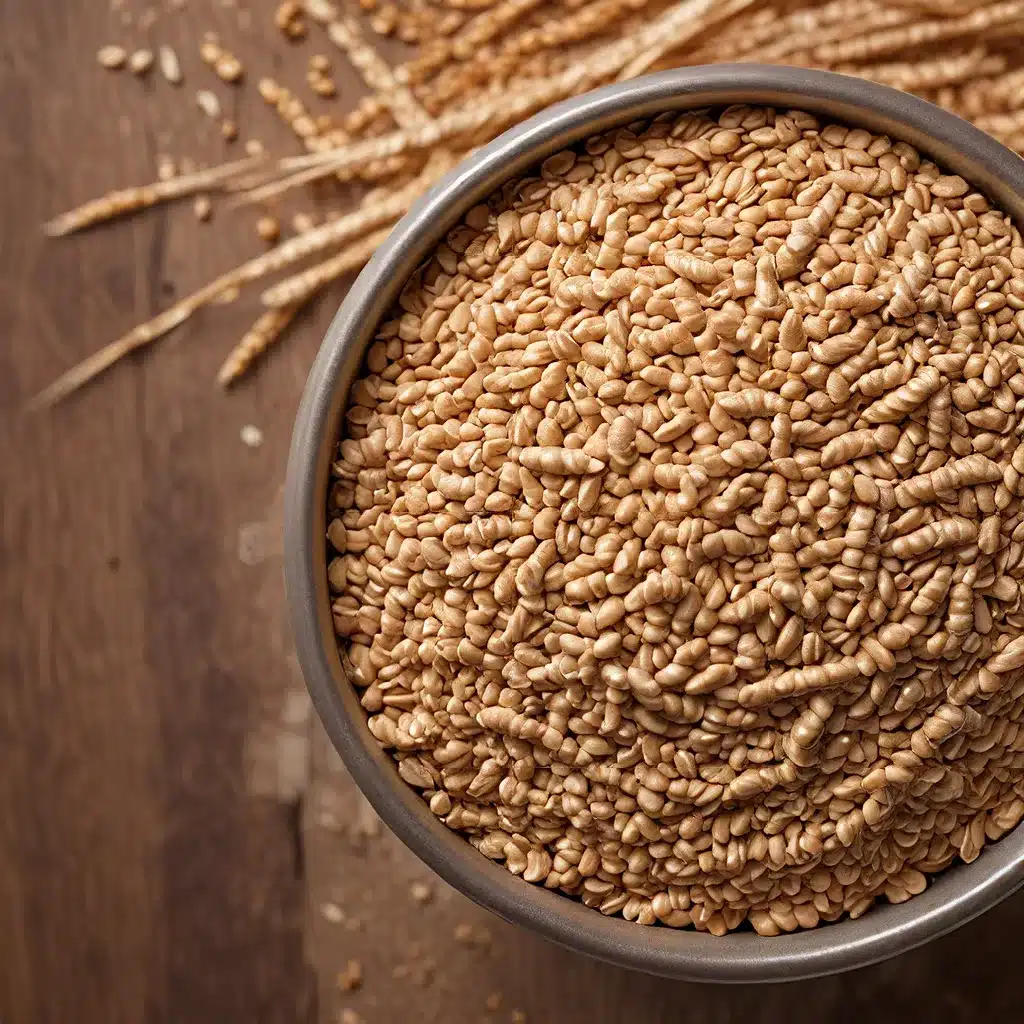
Navigating the World of All-Grain Brewing
Have you ever stepped into a craft brewery and been mesmerized by the complex flavors and aromas of their beers? Well, my friends, the secret lies in the art of all-grain brewing. It’s a world of malt, hops, and yeast that can transport your taste buds on a delightful journey. As a self-proclaimed beer enthusiast, I’m here to guide you through the winding paths of this captivating realm.
The Allure of All-Grain Brewing
Imagine yourself in a cozy pub, sipping on a rich, malty stout or a crisp, hoppy IPA. What if I told you that the key to those remarkable flavors lies in the brewing process itself? Traditional all-grain brewing is a labor of love, where each step is meticulously executed to extract the maximum potential from the grains.
Unlike the convenience of extract brewing, all-grain brewing involves mashing the grains, a process that allows the enzymes in the malt to convert the starches into fermentable sugars. This hands-on approach grants brewers greater control over the final product, enabling them to fine-tune the body, color, and character of the beer. It’s a transformative experience that turns ordinary ingredients into extraordinary liquid art.
Understanding the All-Grain Brewing Process
Ah, the all-grain brewing process – it’s a symphony of science and creativity. Let’s dive into the key steps that transform raw grains into the nectar we all love.
The Mash
The mash is the heart of the all-grain brewing process, where the magic truly begins. Here, the crushed grains are mixed with hot water, creating a porridge-like consistency. This is where the enzymes in the malt work their wonders, converting the starches into fermentable sugars.
The temperature and duration of the mash are crucial factors that determine the final flavor profile of the beer. A higher mash temperature will result in a more full-bodied and malty brew, while a lower temperature will produce a crisper, more hop-forward beer. It’s all about finding the perfect balance to suit your taste buds.
The Sparge
Once the mash is complete, it’s time to extract the sugary liquid, known as the wort. This is where the sparge comes into play. The brewer carefully rinses the grains with hot water, extracting every last drop of sugary goodness.
This step is like a well-choreographed ballet, requiring precision and patience. The goal is to achieve a clear, concentrated wort that will provide the perfect foundation for fermentation.
The Boil
With the wort now collected, it’s time to heat things up – literally. The boil is a crucial step in the all-grain brewing process, where the wort is brought to a rolling boil. This stage serves multiple purposes:
- Hop Addition: The boil is the prime opportunity to add hops, which will impart bitterness, aroma, and flavor to the beer.
- Protein Coagulation: The intense heat causes certain proteins to coagulate and precipitate, resulting in a clearer, more stable beer.
- Wort Concentration: As the wort boils, water evaporates, concentrating the sugars and other compounds.
The length and intensity of the boil can significantly influence the final character of the beer. It’s a delicate dance that experienced all-grain brewers have perfected over time.
Fermentation and Beyond
After the boil, the wort is cooled and transferred to a fermentation vessel, where the magic of yeast takes over. The yeast, a living organism, consumes the fermentable sugars and converts them into alcohol and carbon dioxide, transforming the wort into the beloved beverage we all enjoy.
The fermentation process is a captivating one, as the yeast’s metabolic activities shape the beer’s flavor, aroma, and alcohol content. Factors like temperature, yeast strain, and fermentation duration all play a crucial role in the final outcome.
Once fermentation is complete, the beer may undergo additional steps, such as conditioning, dry hopping, or barrel aging, depending on the brewer’s vision. These finishing touches are what make each all-grain beer uniquely remarkable.
The Benefits of All-Grain Brewing
As a beer enthusiast, I can’t help but gush about the many advantages of all-grain brewing. Let me share a few that have me hooked:
-
Customization: All-grain brewing gives you the power to create your own unique flavor profiles, tailored to your personal preferences. From the choice of malts to the selection of hops, the possibilities are endless.
-
Cost-Effectiveness: While the initial investment in all-grain brewing equipment may be higher, the long-term cost savings can be substantial. The ability to brew larger batches and use raw ingredients directly translates to a lower cost per pint.
-
Sustainability: All-grain brewing embraces a more sustainable approach by utilizing the entire grain, reducing waste and minimizing the environmental impact. Plus, the spent grains can often be repurposed as animal feed or even composted.
-
Enriched Flavors: The hands-on nature of all-grain brewing allows for a deeper extraction of flavors from the grains, resulting in beers with more complexity, nuance, and character. It’s a sensory experience that can’t be matched by extract brewing.
Navigating the All-Grain Brewing Landscape
Now that you’ve caught a glimpse of the wonders of all-grain brewing, it’s time to dive deeper into this captivating world. Whether you’re a seasoned homebrewer or a curious beer enthusiast, the journey ahead is filled with endless possibilities.
The Up & Under Pub is the perfect starting point for your all-grain brewing exploration. With a wealth of resources, from equipment recommendations to recipe inspiration, our team is dedicated to guiding you through every step of the way.
Remember, the beauty of all-grain brewing lies in the freedom to experiment and find your own unique style. So, grab your brew kettle, don your apron, and let’s embark on a delicious adventure through the world of all-grain brewing!

